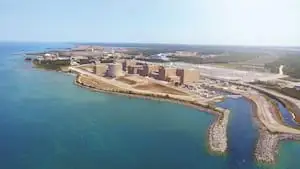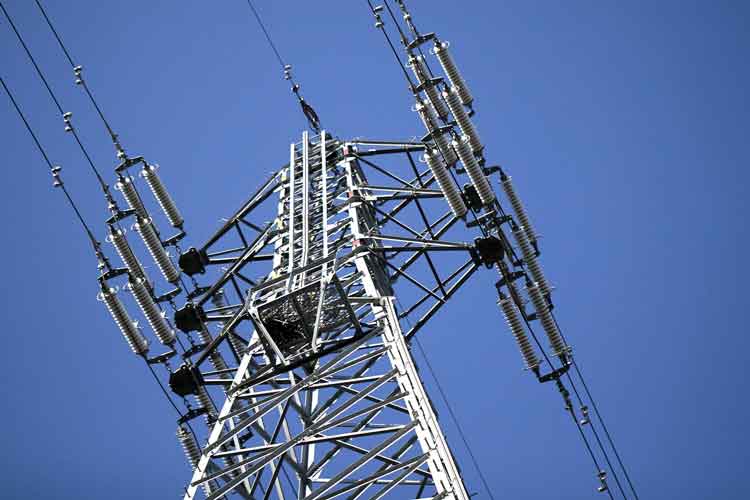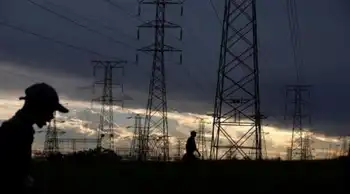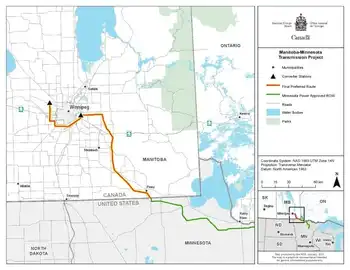Wind industry wants a government lift
But the wind-power industry is looking for a bit of stability: a commitment from the federal government that could help pull it out of the doldrums of the past six months by guaranteeing it a place in the country's long-term energy mix. And industry officials are cautiously optimistic that they'll get their wish.
The Senate Committee on Energy and Natural Resources is considering legislation that would require the country to generate 11 to 15 percent of its power from renewable resources, including wind and solar, by 2021. The House is weighing similar legislation. And President Barack Obama has called for an even more ambitious goal: 25 percent by 2025.
A federal standard, combined with grants and tax credits in the government stimulus package, could help draw billions of dollars in investments, spur plans for new wind farms from Wyoming to Illinois and convince turbine manufacturers to set up shop in the United States, industry officials say.
"What's needed to make that happen is a long-term, stable policy," said Declan Flanagan, CEO of E.ON Climate and Renewables North America, an arm of the massive German utility E.ON.
"Energy is a policy-driven business no matter what energy you're in," Flanagan said at the American Wind Energy Association convention in Chicago earlier this month.
The wind-power industry enjoyed unprecedented growth in the decade before last year's financial crash, with nationwide capacity increasing by 500 percent, to just over 21,000 megawatts, according to the American Wind Energy Association.
Though that's still a tiny part of the energy grid — just over 1 percent of the U.S. electricity supply — industry officials say wind energy could grow significantly over the next few years.
"The general consensus in the industry is that the combination of the stimulus provisions and the move toward (a renewable energy standard) have created, at minimum, the optimism to unlock a lot of development activity," said Joshua Magee, an analyst with Cambridge, Mass.-based Emerging Energy Research.
While construction of new wind farms has fallen with the economy, the industry is riding a high like it's never seen before.
An energized Chicago convention drew more than 23,000 people and almost 1,300 companies — far more any previous year.
The industry also got a boost from a high-profile publicity blitz by Texas oilman T. Boone Pickens, who plans to build a huge Texas wind farm. That project is postponed because of the economy.
"I mean, he's a large personality and he's well known... when someone like T. Boone Pickens has something to say about energy, people tend to pause and listen," said Bill Wicker, a Senate Energy Committee spokesman.
Despite opposition to the renewable energy standard being considered in the Senate from lawmakers whose states aren't big on wind or solar energy, "we've got our fingers and toes crossed that we might be able to get this passed," Wicker said.
Analysts from Britain's HSBC Bank said in a report that the United States could add 6,700 megawatts of wind power generation this year, with the combination of a renewable energy mandate and the stimulus program. That would increase the country's production capacity by almost a third.
Government assurances also could lead to more U.S.-based manufacturing of wind turbines, manufacturers say. Half or more of all the hardware used in a wind-power farm has been built overseas because of the lack of U.S. government policy, they said.
"It's one of the reasons why we have been very hesitant to invest in the United States," said Ditlev Engel, CEO of Denmark's Vestas Wind Systems. The company this spring broke ground on two manufacturing facilities in Colorado that it expects will employ about 1,350 people.
But some analysts warn that the wind business still has challenges.
For one, some of the country's windiest places are in rural areas, including in North Dakota and Wyoming, far from the current electric grid — an expensive problem that would take decades to fully address.
And if natural gas prices remain low, there may be little incentive to buy more wind power than the government mandates.
But those concerns aren't stopping people in the industry from feeling optimistic.
Stefan Noe, president of Chicago-based developer Midwest Wind Energy, went to his first wind convention around 2001.
"You were counting people in the hundreds, right?" he said. "It's just amazing for me to see how the industry has grown over a relatively short period of time."
Related News

Operating record for Bruce Power as Covid-19 support Council announced
ONTARIO - Canada’s Bruce Power said on 1 May that unit 1 at the Bruce nuclear power plant had set a record of 624 consecutive days of reliable operation – the longest since it was returned to service in 2012.
It exceeded Bruce 8’s run of 623 consecutive days between May 2016 and February 2018. Bruce 1, a Candu reactor, was put into service in 1977. It was shut down and mothballed by the former Ontario Hydro in 1997, and was refurbished and returned to service in 2012 by Bruce Power.
Bruce units 3 and 4 were restarted in 2003 and 2004.…




